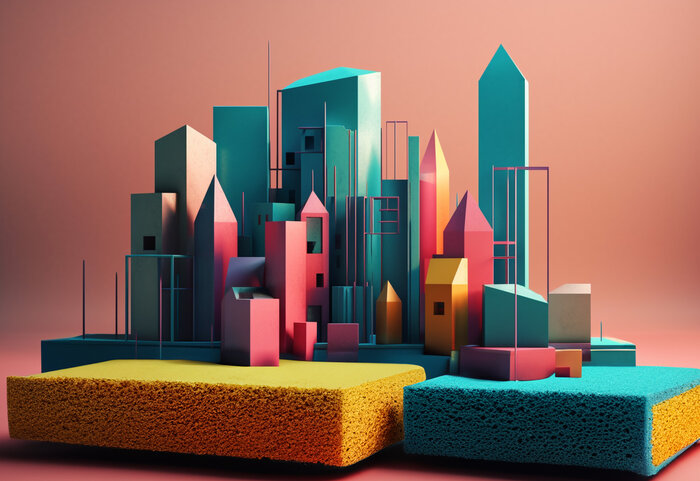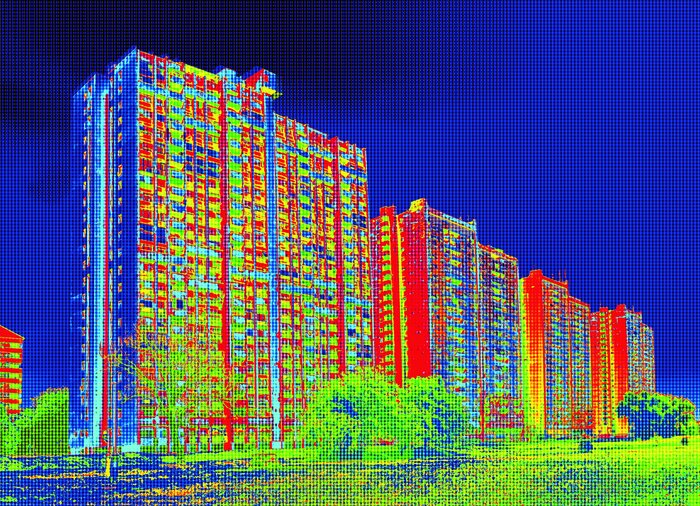What does circular economy mean?

Every German produces around 237 kilograms of packaging waste per year. This is the most of any country in Europe. By 2050, there could be more plastic than fish in the ocean. Tomorrow, we might no longer like a T-shirt we bought two weeks ago. We discard old-fashioned furniture without a second thought. Even in the construction industry, resources are used and disposed of instead of being recycled. How aware are we of the consequences for the environment and for subsequent generations?
We are all aware of the fact that hardly any products end up in our shopping carts without plastic packaging. We can also see that packaging waste lines the streets, and fashion and design are becoming increasingly fast-moving. The key term here is fast fashion.
At the same time, society and politics are becoming increasingly environmentally aware. Since 2021, a range of single-use plastic products have been banned in Germany, including Q-tips, plastic plates, and polystyrene cups, and sustainable alternatives are now commonplace. Each individual person can also take action. The first step is to really think about the products you buy or what happens to products you have already bought.
What is the difference between upcycling and recycling?
Bags made from used truck tarpaulins or fire jackets, cellphone covers made from old fire hoses, lamps made from bicycle rims that are no longer needed, and so on. Before discarded items to the trash, perhaps it is worth giving supposed waste a second chance. Upcycling involves breathing new life and a new function into items that have been passed down from generation to generation, whereby the material value is retained.
On the other hand, recycling usually reduces the material value. Experts therefore also speak of downcycling.
Environmental awareness and appreciation simply go hand in hand with fun when upcycling. Upcycling can be easily integrated into everyday life using milk cartons, yogurt pots and egg cartons. These old containers can be converted into plant pots or pencil holders in no time at all. Furniture made from old pallets is very common for the DIY generation. When combined with cushions and mattresses, they give many living rooms and bedrooms that certain something. While we enjoy the beautiful look, upcycling projects in countries in the so-called Global South are often crucial for better living conditions. These projects can be quite simple but remarkably effective. For example, plastic bottles filled with water and bleach serve as solar lamps for the inhabitants of poor neighborhoods as they reflect the sun’s or moon’s rays into the huts. This is the Liter of Light concept.
Upcycling has become a trend separate from the throwaway and consumer society. The packaging and shipping costs associated with new products are eliminated, but upcycling does not solve the problem of environmental pollution in the long term.
What does the circular economy according to the Cradle to Cradle principle mean?
In the long term, we are only postponing the point at which we throw things away. At some point, considerable material losses occur and the materials are no longer recyclable. In science, this is known as “from cradle to grave.” Wouldn’t it be ideal if the materials could be completely reintroduced into the material cycle in new products?
Cradle to cradle (C2C) experts know that a world can function without waste. As one of the inventors of the C2C approach at EPEA GmbH - Part of Drees & Sommer, Professor Dr. Michael Braungart is promoting a new way of thinking. “When we go shopping, we choose between thousands of products, but when we return them, we only choose between three tons. How can that be? To avoid harmful waste, we therefore rely on pure and defined materials that flow back into cycles as biological or technical nutrients,” explains the chemist.
In this way of thinking, products and processes must be planned from the outset and the entire useful life must be considered, from the cradle to the cradle, so to speak. This means that there is no more waste, only raw materials that are completely returned to the biological or technical material cycle. Nature is the best role model here as there is no waste in nature. The C2C approach uses only high-quality materials that can be easily and simply broken down into their individual components after use. They can then be used in new products. The recycling, high quality and sustainability of the components all play an important role.

Circular economy in the construction industry
The C2C approach has great potential in the construction industry in particular, as it consumes around a third of the world’s resources and, according to an estimate by the United Nations, around half of the raw materials consumed in Europe are used in this industry.
Applied to the construction industry, C2C means that all building materials and construction products are designed in such a way that their components are preserved in terms of quality. Buildings therefore become raw material depots that release their used materials for further utilization at the end of their useful life. Buildings would then be completely free of glue, drywall, plastic, and additional insulation material, for example. The interior design of buildings also complies with the C2C standard. For example, carpets must not be glued down.
In accordance with the blue way approach, Drees & Sommer also integrates the C2C way of thinking into its customer advice in order to combine ecology and economy. Buildings and workplace concepts are created in accordance with this principle. One of the projects that Drees & Sommer has supported is the new administration building of the RAG-Stiftung and RAG Aktiengesellschaft at the Zollverein World Heritage Site in Essen. This is the first C2C-certified partition wall system in Germany, and it was produced by Strähle. Another example is the new central fire station in the small Swabian community of Straubenhardt. The materials used at Drees & Sommer, such as brochures, flyers, printer paper, and many of the advertising materials, are also recyclable or at least C2C-inspired.
Nevertheless, there is still a lot of room for improvement when it comes to the C2C design principle. The only way we can move toward to a sustainable future and a world without waste is to fundamentally rethink what we do.

Verwaltungsgebäude der RAG-Stiftung und der RAG Aktiengesellschaft auf dem Welterbe Zollverein in Essen


